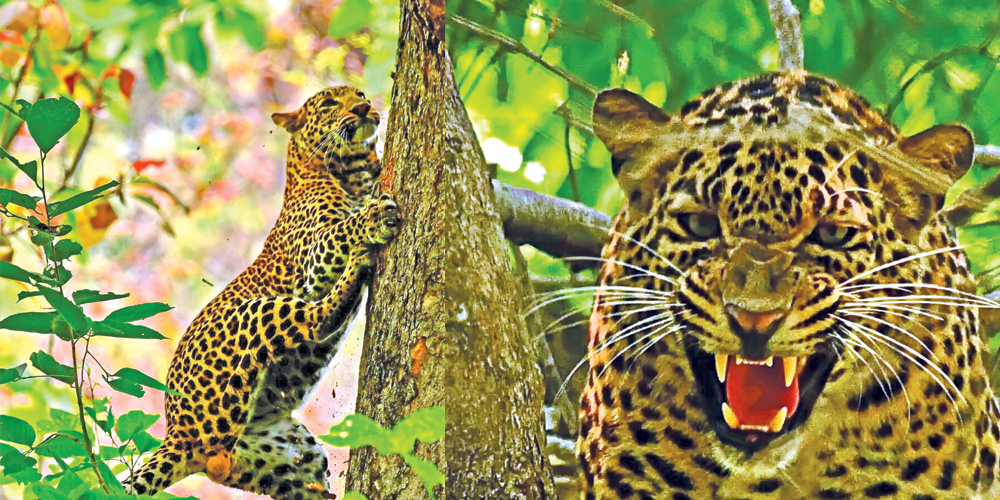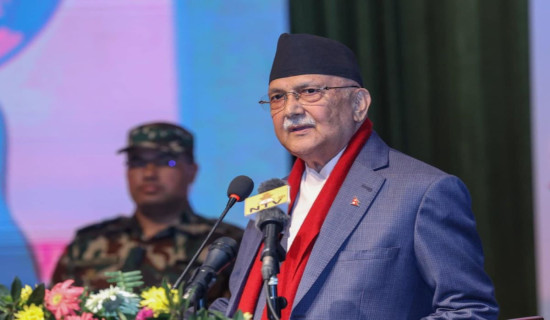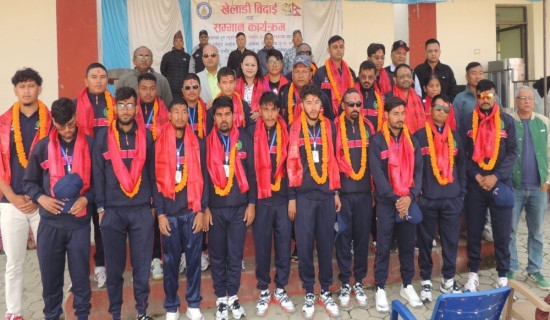- Tuesday, 26 November 2024
Bardiya National Park : Home For Big Cats
Rajesh Dhungana
Deep Forest
A few days ago, I visited this national park for wildlife photography. I have so far visited this Park three times for the same purpose. My highly experienced jungle safari guide, Deepak Rajbanshi, who happened to be my old acquaintance, took me to safari in this famous park.No one can enter or leave any national park in the country without a guide. In the deep forest, accidents can happen at any moment if one confronts wild animals. A couple of months ago, tigers of this park had attacked many people in the streets passing through the park.
I entered the national park in a safari vehicle with my guide at 6 am. Guide Rajbanshi told me to go to the place where the leopard recently killed a chital ( a large spotted deer). I went there with him with the hope that the same leopard could be seen there. We went to the same place. We got out of the jeep and walked to the place where the leopard had hunted the animal.
It is very risky to go to the place where a big jungle cat is staying with its kill. But we went there gathering our courage. The deer meat killed by the leopard appeared fresh. I took
its picture too. "I guess the leopard must be somewhere in the tree," the guide told me. And as we slowly looked at the tree from the Safari jeep, we saw the leopard sleeping on the tree at a distance of about 125 meters. The tree where the big cat was sleeping about 60 feet away from the forest road. I got out of the jeep and started taking pictures. The leopard stayed in the same tree for about 60 minutes and remained there without making any move, allowing me to take pictures.

From time to time, the clicking of my camera made the big cat angry. Then the leopard started jumping from one branch to the other. I was very excited. I was not scared at that time. I went closer and took a close-up photo of the animal. My guide Deepak warned, "Sir, don't go very close to the tree, it is riskier." And, I turned back. Again, I started taking pictures of the animal in different poses. I could not remember how many pictures I took. It was quite rare to see a leopard in its abode.
About an hour later, the leopard began descending from the tree. I was surprised to see it performing its acts in the tree. Like a monkey, this leopard jumped from one branch to another, climbed the tree and then descended quite easily and smoothly.
The leopard is one of the five endangered species grouped in the genus Panthera. The animal has been listed by the IUCN as an endangered species because of the damage and fragmentation of its habitat.
After the leopard came down from the tree then it entered the bush of the forest. I was glad to take rare pictures of a wild, untamed leopard. Also, my guide Deepak said that he had never seen him sitting so close at a tree. "You took the picture of an amazing animal today."
After that, we walked around the park areas and came out of it at around 7 pm. I was curious looking at pictures on my laptop in the hotel. When I looked at the pictures, I found that the leopard's eye was staring at me. I really got scared when I looked the pictures which showed that the furious animal was angry at me. Because I took pictures going so close to him. I realised that taking pictures of an untamed wild leopard from close range is indeed a risky job even for a professional wildlife photographer.
Endangered
After a leopard hunts, it eats its kill on a tree and then takes rest on the same tree. The leopard is one of the five endangered species grouped in the genus Panthera. The animal has been listed by the IUCN as an endangered species because of the damage and fragmentation of its habitat. Its number has declined in a large part of the world.
Leopards have relatively long front legs with smaller hind legs and large heads. It is very similar to the Jaguar {Panthera Onka}. It can run at a speed of 58 km per hour and has a body between 2 feet 11.4 inches and 6 feet 5.2 inches long, with a tail between 2 feet 2 inches and 3 feet 4.2 inches long. The Leopard sizevaries according to geography. The number of leopards in Nepal is around 300 to 400.
(Dhungana is a former photo editor of Gorkhapatra and has involved in wildlife photography since he retired in 2017. All photos by writer)

















